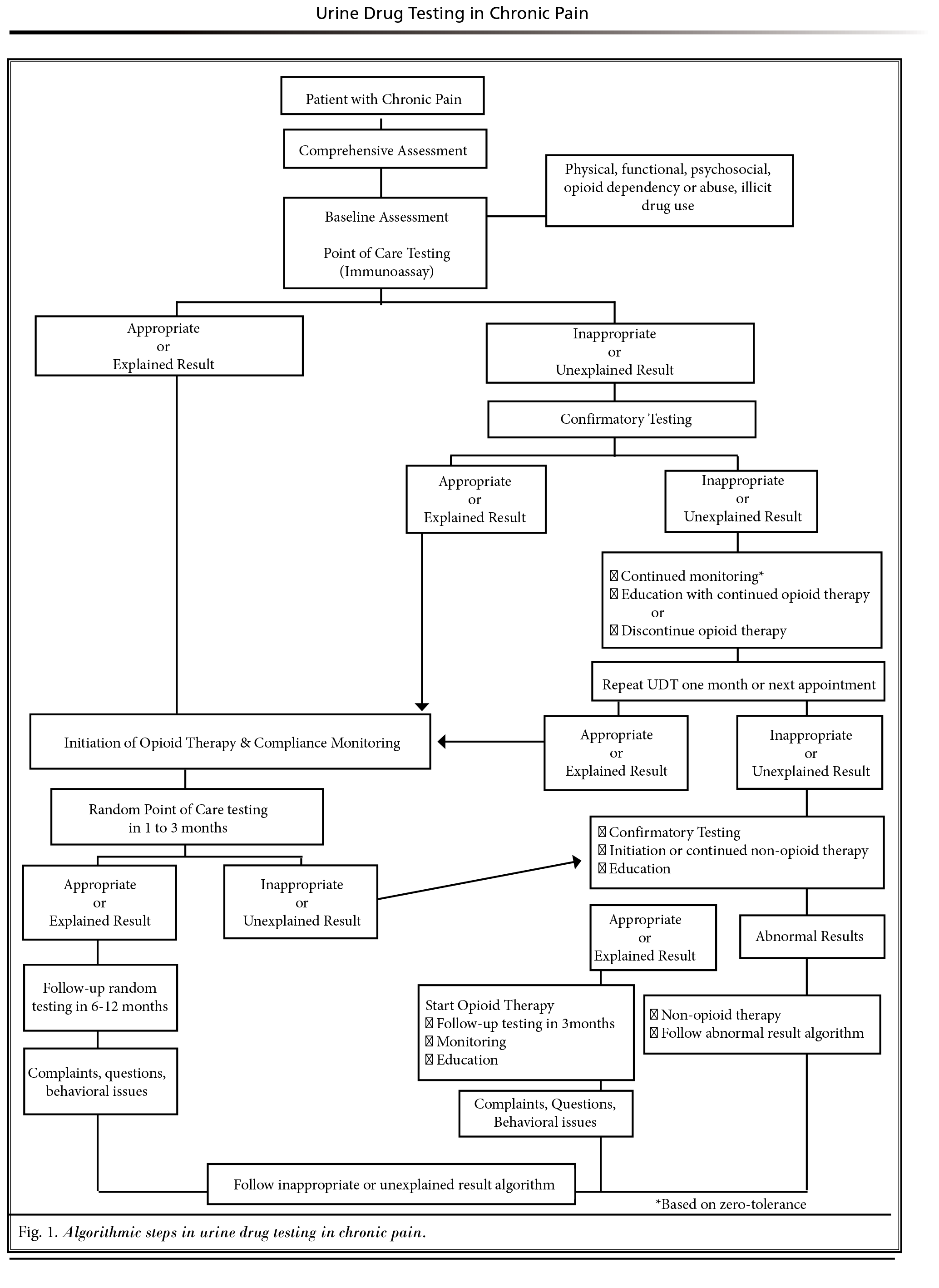A comprehensive approach to therapeutic drug monitoring consists of three phases of testing; drug screening, drug confirmations, and pharmacogenetic testing. Drug screening is performed using a qualitative immunoassay screen, mainly on clinical chemistry analyzers using homogenous enzyme immunoassay reagents. Drug confirmations are performed using a more sensitive, quantitative methodology, generally a LC/MS analyzer. Lastly, pharmacogenetic testing is a relatively new molecular diagnostic procedure that can help identify a patient’s ability to metabolize therapeutic drugs.
THERAPEUTIC DRUG MONITORING by pain management physicians provides:
| Benefits | Comments |
| Patient Adherence/Compliance | Zero, subtherapeutic, or highly variable drug levels are indications of non-compliance. However, subtherapeutic levels are also observed in ultra-rapid metabolizers. |
| Personalization of Dosage | Metabolism and elimination of certain drugs depend on various pathophysiological conditions and genetic makeup. |
| Avoidance of Adverse Drug Event | Therapeutic drug monitoring is very useful in avoiding adverse drug events, as well as drug toxicity. |
| Improvement in Patient Safety | Therapeutic drug monitoring improves patient safety and reduces hospital visits, thus saving health care cost. |
| Investigation of Non-Response | Patients may not respond to a drug due to poor absorption or genetic variation in drug metabolism. |
Guidelines for Therapeutic Drug Monitoring in Chronic Pain

Drug Screen: CLIA Waived (G0434) Vs. High Complexity (G0431)
| HCPCS Code G0434 |
HCPCS Code G0431 |
| National Average $20.00 | National Average $100.00 |
| Drug screen, other than chromatographic; multiple drug classes by CLIA waived or moderate complexity, per patient encounter. | Drug screen, qualitative: multiple drug classes by high complexity test method (e.g., immunoassay, enzyme assay), per patient encounter. |
In addition to G0431, practices should perform an adulterant panel consisting of pH (83986), specific gravity (81003), general oxidants (84311), and creatine (82570) which reimburse approximately $23.00.
Drug Screen: Monthly Revenue Potential
Whether you’re a solo practitioner, small group, or a large specialty practice, urine drug testing in a high complexity laboratory will realize greater reimbursement per patient encounter. We work with physicians to ensure a smooth transition from CLIA Waived to High Complexity urine drug testing.
Below is an example of potential revenue based upon Medicare reimbursements* (G0431), as well as overhead consisting of the chemistry analyzer, reagents, and the administrative oversight required to operate a High Complexity urine drug testing laboratory within a medical practice.
| Samples | Overhead | Reimbursement | Revenue |
| 100 | $6,400 | $12,495 | $6,095 |
| 200 | $6,784 | $24,990 | $18,206 |
| 300 | $7,168 | $37,485 | $30,317 |
| 400 | $7,552 | $49,980 | $42,428 |
| 500 | $7,936 | $62,475 | $54,539 |
| 600 | $8,320 | $74,970 | $66,650 |
| 700 | $8,704 | $87,465 | $78,761 |
| 800 | $9,088 | $99,960 | $90,872 |
| 900 | $9,472 | $112,455 | $102,983 |
| 1000 | $9,856 | $124,950 | $115,094 |
*Reimbursement is based on 2013 Medicare National Avg. $99.95, plus adulterant panel $23.00.
**Overhead based on instrument, reagents, and administrative oversight (Medical Director & MT/MLT).
Call (855) 765-7767 for immediate assistance!




